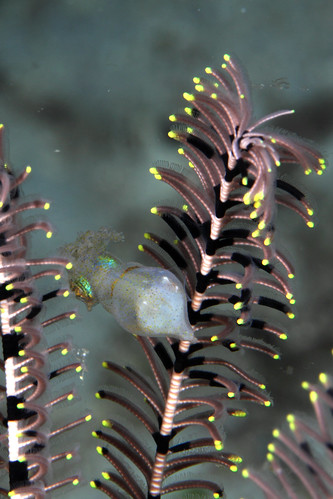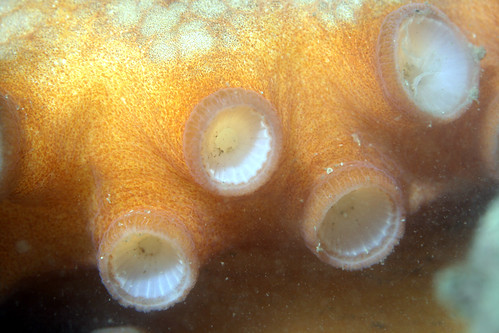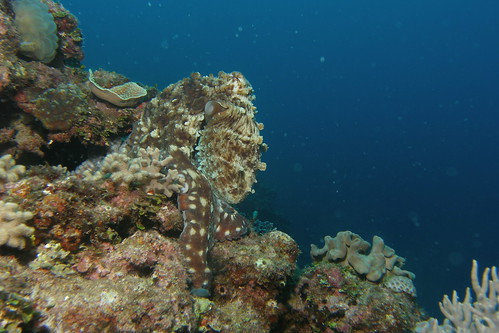Here is an O. cyanea showing a mostly white color pattern while jetting, a behavior often associated with defensive flight.

Here is another gorgeous octopus of the same species, giving the camera an inquisitive look. This was taken at at Keone'ele Cove in Honaunau (another place to add to my "List of incredible spots to visit when I get money" spreadsheet.)

I always love to see octopuses express dramatic papillae. In this next shot, we see an octopus who is apparently trying to look like just another chunk of coral, even if he's not doing a terribly good job.
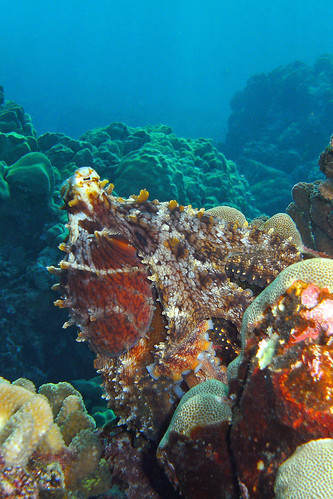
This next one shows an octopus (O. cyanea again) in a defensive posture. Notice the high contrast color pattern, the curled arms, and the spread interbrachial web. The point of this behavior is to look big enough to make a potential predator think twice before he eats you - it's a common strategy among prey species. According to Barry, the animal adopted this pose when approached by some fish.
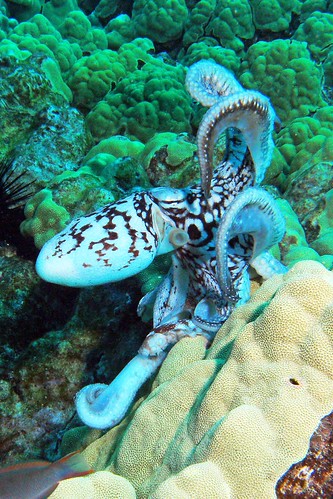
I like this next shot simply because you can see right into the octopus's mantle. It's somehow fascinating to me to see the inside and outside of an animal at the same time like this.

These next two photos show some behavior that I had never heard of before reading the photographer's description. Apparently, the fish (a peacock grouper) was following this octopus around to feed on small prey that the octopus stirred up as it foraged over the reef. According to Barry, they usually follow eels, but he found this one hanging around a hunting O. cyanea. I'd argue that it is probably not cooperative hunting per se, as it's unclear how the octopus would benefit from it, but it's fascinating behavior nonetheless.
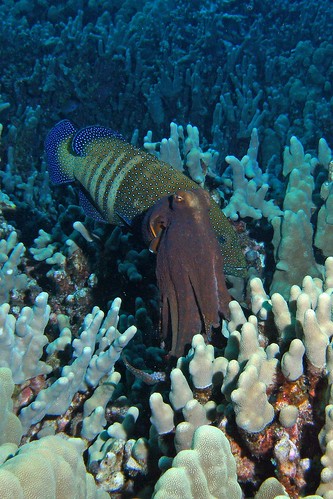

I'll finish up with two gorgeous portraits of O. cyanea just sitting on the reef. I love the colors of these octopuses.
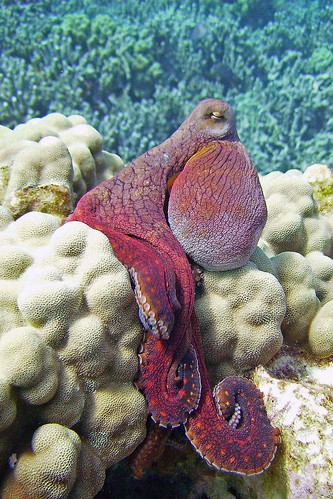

Thanks for reading! Make sure to click on over to Barry's photostream and check out his other underwater photos.





